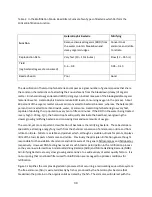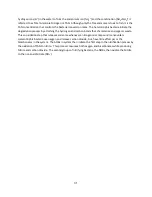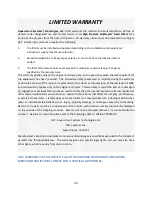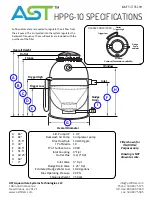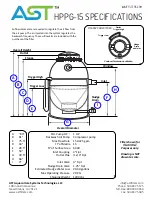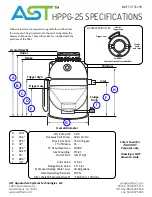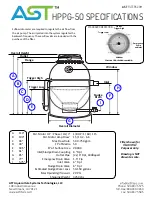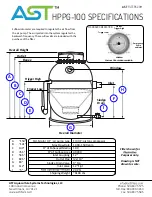
25
Table 3. Things You can do to Accelerate the Initial Acclimation of a Bead Filter
Procedure
How does it help?
1
Add sodium nitrite at a concentration of 1 mg-N/I
on the first day.
Allows growth of Nitrobacter to start
immediately.
2
Add beads or tank substrate from an established
biofilter. *
Introduces species/strains of bacteria that
are well suited for the bead filter’s
ecosystem.
3
Reduce Filter Backwash Frequency
Minimizes the loss of biofloc.
4
Raise the temperature of the system to 30°C.
Accelerates bacterial growth rates by
increasing metabolic rates.
5
Adjust the pH to 8.0. ( Check fish compatibility;
otherwise, cycle fishless with chemical additions)
Accelerates bacterial growth rates by
increasing ammonia (NHз) concentrations.
6
Add sodium bicarbonate to raise the alkalinity to
150 mg-CaCOз/I
Accelerates bacterial growth rates by
increasing bicarbonate availability.
* Disease may be spread with the biofilm, so make sure the source is healthy.
The animals you select to use do not need to be the same as what you will be culturing. The best choice
for freshwater systems is turtles. The ammonia and nitrite concentrations that will be reached will not
affect these animals. Therefore, you do not have to worry. In-expensive domestic Koi or goldfish are
good choices if fish are used. However, it is important that the fish or animals used during acclimation
are disease free so as not to infect your high quality fish later. These animals can tolerate
short-term
exposure to TAN and nitrite levels of about 5 mg-N/l without harm if you keep the pH between 7.5 and
8.0 and add some sodium chloride (rock salt) or calcium chloride. Chlorides help prevent nitrite toxicity
by blocking nitrite transfer in the gills. The pH range keeps the TAN in the less toxic NH
4
+
form. It is
usually the nitrite peak, which is twice to three times as high as the TAN peak, which damages the fish.
If the fish show signs of stress (inactivity, lack of hunger, or gaping near the surface), remove them; you
will have plenty of food for the bacteria in the water column already. The fish should be reintroduced
into the system once both the TAN and nitrite levels fall below 1 mg-N/l.
Most systems will acclimate in two to three weeks without any problems. Occasionally a system will be
“stuck” typically in the nitrite acclimation. The reproduction rates of the NOB’s is much slower than the
AOB’s. The NOBs only reproduce a few times a day. The growth rate of marine NOBs is slower than
freshwater NOBs so marine acclimation typically fall in the three to four week range, However, the main
reason for delayed acclimation appears to be water temperature. The reproduction rate of an NOB at




















